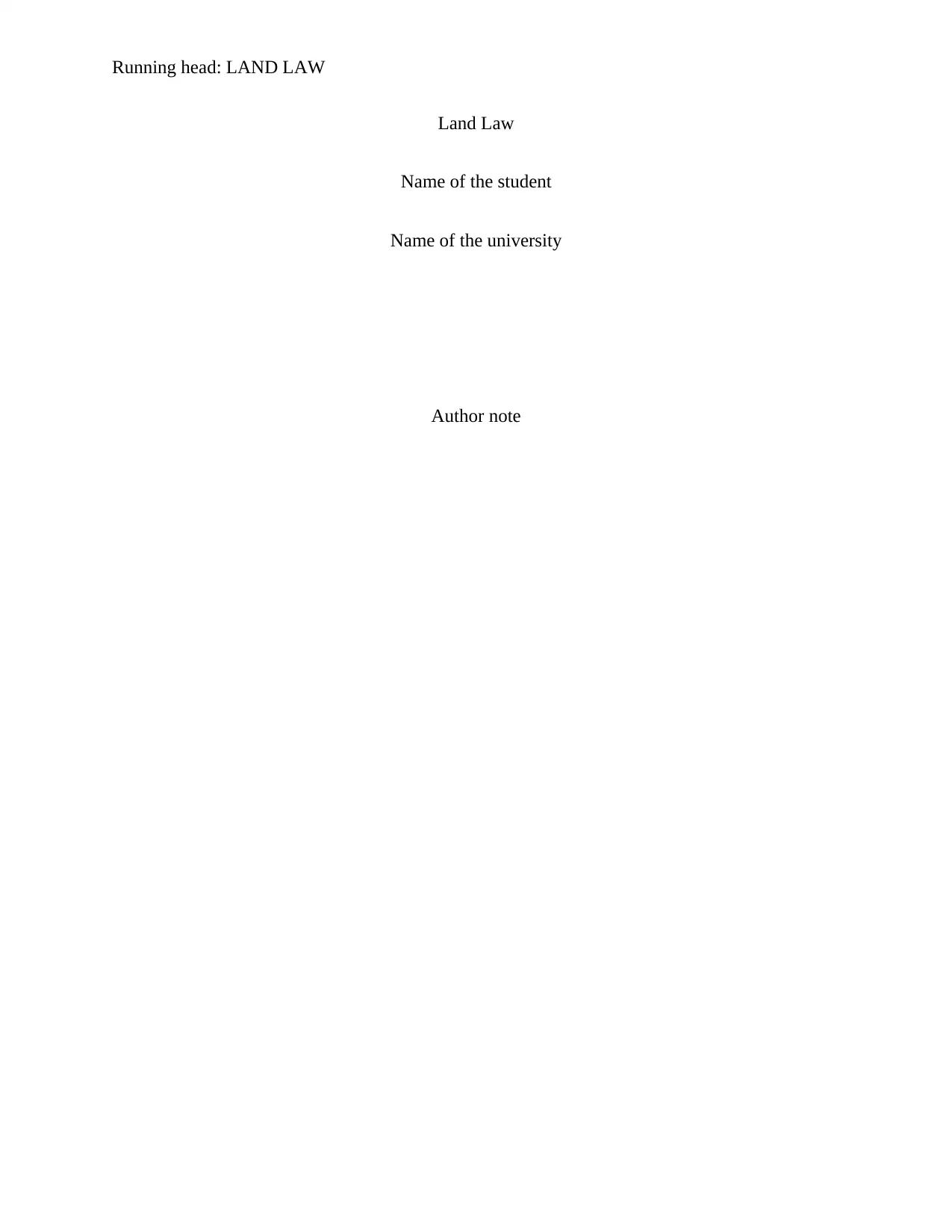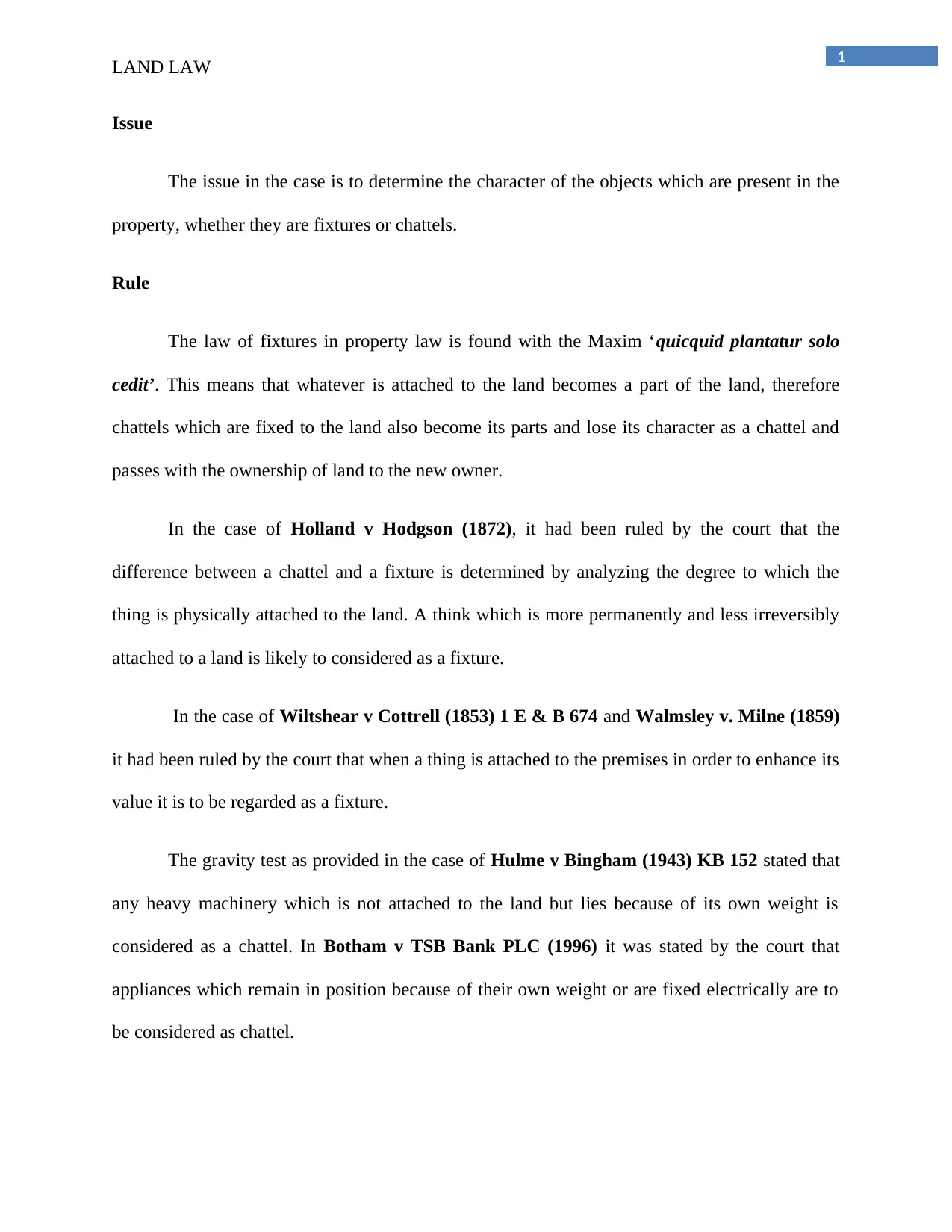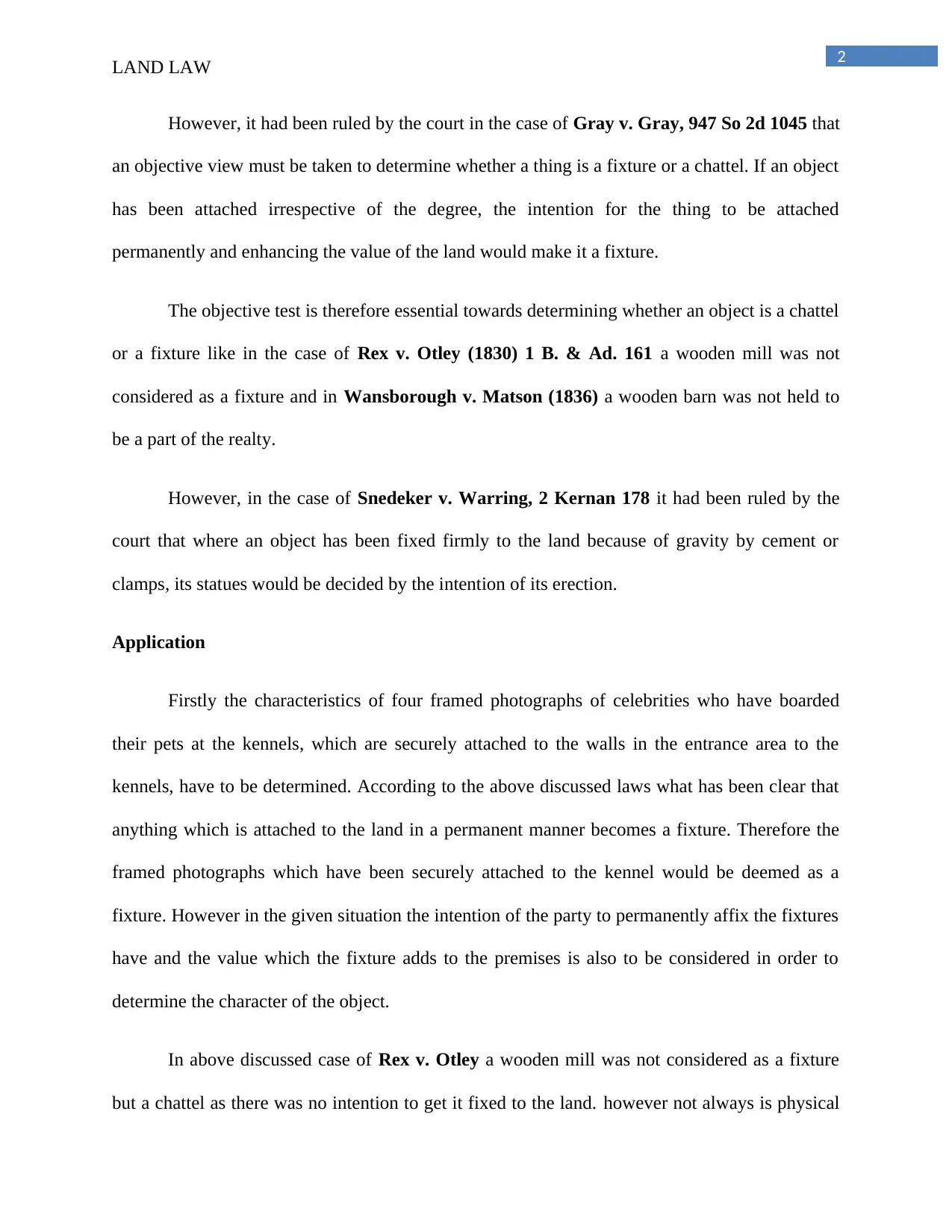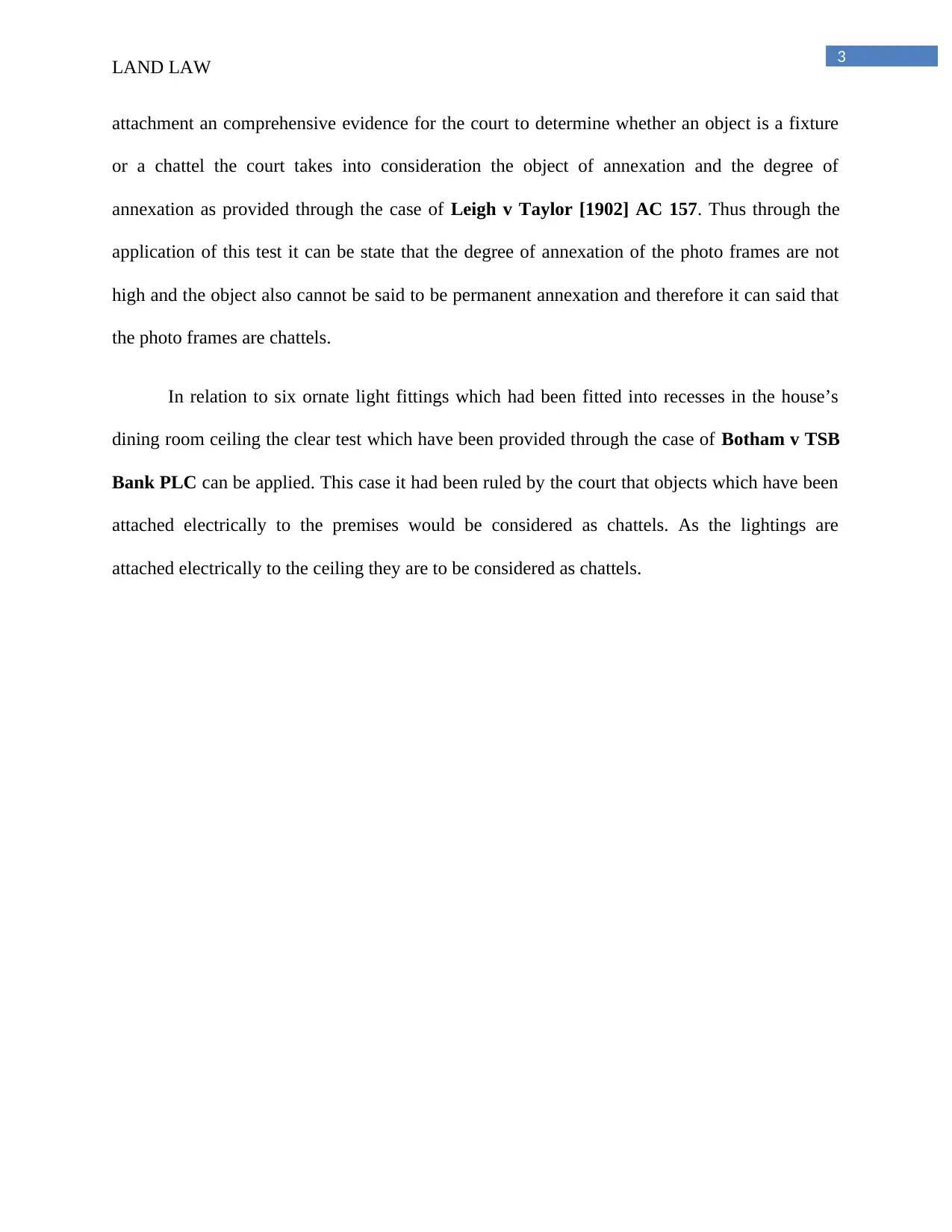Land Law Assignment: Analysis of Fixtures and Chattels in Property Law
VerifiedAdded on 2020/04/15
|4
|841
|648
Homework Assignment
AI Summary
This Land Law assignment addresses the issue of distinguishing between fixtures and chattels in property law, focusing on the legal principles and case law that govern the characterization of objects within a property. The assignment begins by explaining the core concept of fixtures, citing the maxim 'quicquid plantatur solo cedit' and key cases like Holland v Hodgson (1872), which established the importance of the degree of attachment. It further discusses the 'gravity test' from Hulme v Bingham (1943) and the objective approach established in Gray v. Gray. The assignment then applies these principles to two scenarios: framed photographs attached to kennel walls and ornate light fittings in a dining room ceiling. The analysis considers the degree of annexation, intention, and the value added to the premises, ultimately concluding whether the items are fixtures or chattels based on legal precedents. The assignment references cases such as Rex v. Otley (1830), Botham v TSB Bank PLC (1996), and Leigh v Taylor [1902] to support its conclusions.
1 out of 4










![[object Object]](/_next/static/media/star-bottom.7253800d.svg)